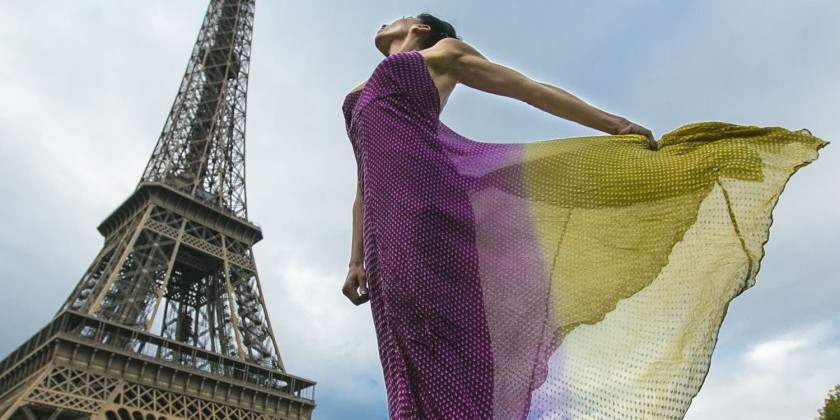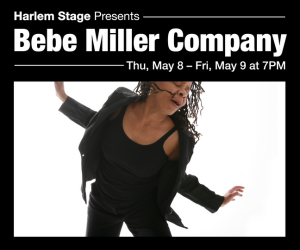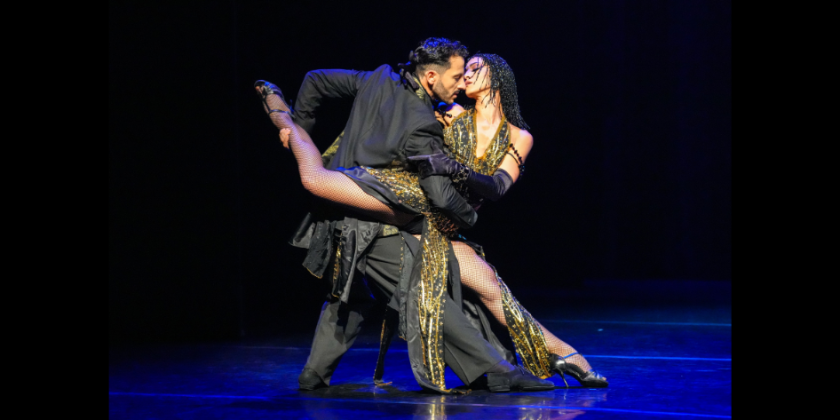Nejla Yatkin Shares: What I Learned From Dancing Around The World

One Year, Seven Life Lessons
About the Artist: Choreographer, solo performer and Artistic Director of NY2Dance, Nejla Y. Yatkin is finally home after a year of “Dancing Around the World.” The dance artist reveals and revels in the important lessons that she learned during the worldwide tour.
Most people travel around the world to get a way from their jobs. My work includes traveling and creating with, and for, other artists, groups and institutions abroad. I have traveled extensively and created dance works my whole life, but I've never traveled and worked on the same project continuously without returning home.
I am a dancer. I feel at home expressing myself through dance. Dance opens up my thinking and consciousness. We are essentially embodied creatures; each of us lives in a body, and our body is essential to our consciousness, to ourselves and to our perception of the world. The mind is not "just up in your head", but distributed throughout our entire body and nervous system. The condition of our body affects our perception of the world around us. The ways in which our hormones and biochemistry interact with the magnificent complexity of our bodies is essential to our view of ourselves in the world. We are not incidentally embodied; we are fundamentally embodied.
Our consciousness is intimately connected to our physicality. If you engage people in physical activity, you can change their consciousness. That’s why I strongly believe that everyone should move and dance, and then do it some more.

In 2013, I toured my piece entitled Oasis – Everything you ever wanted to know about the Middle East but where afraid to dance, which was inspired by the Arab Spring. In between performance tours with my company NY2Dance, I rested in Chicago to prepare for the next project. During one of my meditations, I got the idea to travel around the world and create site-specific dance performance workshops with local communities. I wanted to conduct “Dancing Around the World” (DAW) in as many countries as possible to show that we have more in common than we believe.
I was tired and anxious – tired of negativity, conflicts and separation which were continuously emphasized in world news reports. I wanted to see and experience for myself that the world is still a beautiful place; full of hope, joy and celebration. And I also wanted to show that people are kind, creative and happy souls. But most importantly, I wanted to reveal that we all want the same thing, in essence – to love and be loved for who we are.
As a dancer maker, it was important to me to demonstrate how essential it is to dance and to express yourself physically -- to show the benefits of dance beyond its entertainment value, beyond its performative context, beyond its physicality. I wanted to emphasize the intangible values of dance: its emotional, spiritual, mental and cultural virtues. Many are unaware of the subtleties that dance practice exposes people to. I created this project not to travel around the world as a tourist or an observer, but to experience world cultures through an intimate exchange. I didn’t want to consume a culture, but to add value to the culture I was visiting. And what better way than dancing together? Dance is the most intimate art form. It teaches you about yourself and your place in the world in profound ways. As Martha Graham said “Nothing is more revealing than movement.”
The task ahead was daunting, but step by step - as in choreography - you start to see the pieces come alive and together. The first few tasks were easy. First, I wrote a project description and prepared a presentation to be considered for funding. Then, I had to find presenting and hosting partners around the world to get enthused about the project. I needed to put a budget together and realized early on that I couldn’t travel with my dancers because the budget was too large for a small company. Being responsible for a whole group of people was much more risky for an independent company like mine. But, we could make the project happen if we traveled small. So, I decided to travel around the world with my partner and collaborator Enki Andrews, who coincidently is a videographer/photographer and multi-media artist. I believed that it would be essential to document Dancing Around the World (DAW) so we could expose our supporters and others in the community to the places and dancers we engaged with. We wanted to take our community with us on our journey.

Finding partners around the world and getting them excited about the project was easy. Finding grant organizations to fund the endeavor was more challenging. Many foundations and funding organizations didn’t believe an individual could pull this off, or didn't think my project could fit in their funding criteria. Some thought this was too big of a project -- maybe I didn’t explain myself well. Needless to say, we did not receive any funding from traditional sources. I must say, everybody I talked to loved the concept , and thought DAW was beautiful, but when it came to money there were many rejections. Still, I was driven to carry our work out. Something deep inside of me knew Dancing Around the World (DAW) was important and needed to happen.
We organized a crowd funding drive on Hatchfund, a platform for artists, in order to cover travel to twenty cities. We were blessed to receive a lot of support from generous individuals, friends, and family, who believed in the idea. In the end, we obtained more than $25,000. Our project was only made possible because of these people.

My daily schedule in each city was a little different but generally, I would teach an open technique class in the morning to get everyone on the same mental, emotional and physical base. It’s important to start the day with a studio practice because it provides dancers with a safe space to open up and be vulnerable with one another. During my classes, I'd teach contemporary dance technique with floor exercises including physical theater techniques, partnering and guided improvisation. The daily classes let the dancers fine tune their senses to each other and the spaces that they inhabited. Dancing in public spaces takes a lot of focus because there are many distractions outside. Concentration and focused exercises are a great tool to create focused energy among the participants who have never performed outside and together before. Since the workshops were open to any level, we would have diverse skill levels and diverse age groups, but the challenge was to make the process as inviting and as inclusive as possible.
The journey started in Chicago and our first site was Bogotá, Colombia, the only city where we stayed for one week. We were in residence at the Casa de la Danza supported by the German Embassy and hosted by Vannia Ibarguen of Danza V.I.D.A. We continued to 17 different cities and collaborated with 17 different groups of dancers, institutions, embassies and art organizations. Our next city was Medellin, where we spent three weeks. In Medellin we were hosted by Danza Concierto and Peter Palacio and the City of Medellin. I won't name all the countries visited and partners we collaborated with, but you can see their names on the credits of the videos on my Youtube channel.
Now that I am back and reflecting on the journey, I wanted to share:
What I have learned from traveling and collaborating with 18 different organizations and dancers around the world.
- First lesson: Simplify your project description. Be very clear with your language and don’t assume people understand what you mean. Ask questions and clarify some more. Double check your facts. Some organizations say they understand your project but most arts organizations are understaffed and overworked and might not pay attention to the details.
- Second lesson: Travel light. Most people overpack their suitcases. You don’t need that extra pair of jeans or those extra heels. I suggest you pack your bag three times and each time, leave half of it out, and you'll have the exact amount you need for the road.
- Third lesson: Take care of your body. Get the rest you need; if you need eight hours of sleep, schedule and sleep for that amount of time. Denying your body what it needs is not a sustainable strategy. We also found that having a steady breakfast routine was very stabilizing even when waking up in another country in a different time zone. Give yourself time to recover. We didn’t do much sight-seeing. Since we were working for a whole year, we prioritized what our bodies were telling us.
- Fourth lesson: Be flexible with your lesson plan. Make an outline and not a rigid plan. Being flexible during the process will create a deeper understanding and a deeper exchange with the participants. You start to get a better sense of the place, the culture, the people and their hopes and dreams, thus creating a more rewarding exchange.
- Fifth lesson: Sameness comes in different shapes and colours. Even though we all come in different shapes, colors and sizes, we are all the same in essence. We all have two pairs of eyes, a nose and a mouth. We all have the basic structure of a body with two arms and two legs, and the body has pretty much the same limitations and possibilities around the world – this you learn especially when dancing and improvising with each other.
- Sixth lesson: Learn to listen. We may know how to use our body parts to send messages, but not many of us realize that people in different parts of the world 'speak' different body languages. This can include how we greet others, how we sit or stand, our facial expressions, our clothes, hair styles, tone of voice, eye movements, how we listen, how we breathe, how close we stand to others, and how we touch others. The pressure of body language is especially felt in emotional situations where body language prevails over words. But teaching dance around the world and creating an art piece with the body breaks down the barriers of cultural differences. You can adapt your creative project through sensitive listening, to communicate more affectively through the nonverbal communication channels.
- Seventh lesson: We are all connected. On the topic of war with other countries: the people that might face harm are the ones you meet in the workshops, the children you see on their way to school, and the family members walking arm in arm on the same street as yourself. Suddenly it becomes personal and it’s not okay to see them injured or killed.
- Of all of the benefits of travelling, I think that this is the most far-reaching and the most important: Other human beings are our most treasured gifts here in this life. Develop a love for other cultures, religions and lifestyles. Let them see that we are all one too. I believe that if we do this we can change the world one traveling peacemaker and of course, dancemaker at a time.













